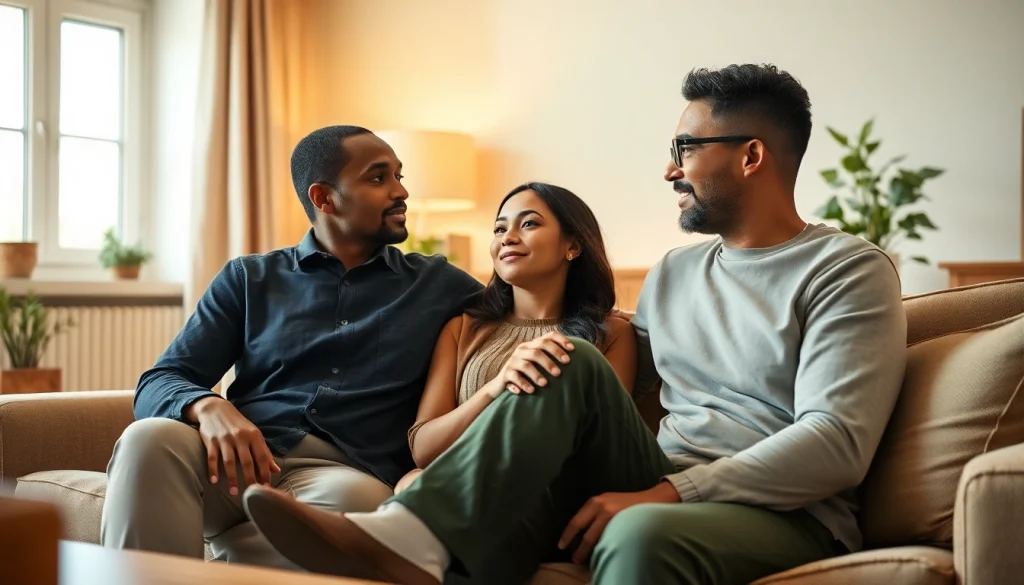The Importance of Communication in Relationships
Effective communication is at the heart of any healthy relationship. It shapes our interactions with partners, friends, and family, forming the basis for understanding and emotional connection. When we talk about communication in relationships, it encompasses not just verbal exchanges, but also nonverbal cues, emotions, and intentions.
Understanding What Communication Means
Communication involves the exchange of information—a blending of thoughts, feelings, and experiences. However, it transcends mere words. Verbal communication is often influenced by tone, context, and nonverbal signals such as body language and facial expressions. To understand and be understood, one must engage in a reciprocal process that involves active listening and genuine interest in the other’s point of view.
How Communication Affects Relationship Dynamics
Positive communication fosters intimacy, builds trust, and allows partners to navigate conflicts effectively. Studies show that couples who communicate openly report higher satisfaction levels in their relationships. Conversely, negative communication patterns can lead to misunderstandings and resentment. For example, criticism, defensiveness, and stonewalling are detrimental to relationship dynamics and can erode trust over time. Recognizing the impact of communication behaviors helps couples to either reinforce or rethink their ways of connecting.
The Role of Open Dialogue in Relationship Health
Healthy relationships thrive on open dialogue, where all parties feel free to express their needs and concerns. This freedom encourages vulnerability and improves emotional intimacy. Regular, honest conversations about feelings, future plans, and daily experiences not only enrich relationships but also help in building a supportive atmosphere. Couples who implement structured check-ins or regular open dialogue sessions often find that they are better equipped to handle conflicts and challenges as they arise.
Key Components of Effective Communication
Active Listening Techniques for Couples
Active listening is a crucial skill in effective communication. It involves more than just hearing the words spoken; it means fully engaging with what the other person is saying. Couples can enhance their active listening skills through techniques such as:
- Paraphrasing: Restate what the other person has said to confirm understanding.
- Reflective Listening: Acknowledge feelings by reflecting them back (e.g., “It sounds like you’re feeling really hurt about that.”).
- Ask Clarifying Questions: Ensure clarity by asking questions when something isn’t clear, which shows your engagement and interest.
By fostering an environment primarily focused on the speaker, couples can deepen their understanding of each other and create a more empathetic connection.
Nonverbal Communication: What You Need to Know
Nonverbal communication can convey feelings and intentions just as strongly as words. Examples include:
- Facial Expressions: A smile can indicate warmth, while furrowed brows can signify confusion or concern.
- Body Language: Open posture often conveys receptiveness; crossed arms may indicate defensiveness.
- Eye Contact: Sustained eye contact can enhance intimacy and trust, while lack of it may signal disinterest.
Understanding and aligning nonverbal cues with verbal communication enhances clarity and reduces misinterpretations.
Expressing Needs Clearly and Compassionately
Articulating one’s needs is essential in any relationship. A compassionate approach starts with using “I” statements to express feelings and needs without placing blame or creating defensiveness in the other person. For example, saying “I feel upset when plans change last minute” is more effective than “You always change plans on me.” This clear communication opens the door for discussion and problem-solving, leading to deeper emotional connections.
Common Communication Barriers in Relationships
Identifying Miscommunication Patterns
Miscommunication occurs when partners interpret messages differently. Common patterns include:
- Assumptions: Assuming you know what your partner is thinking can lead to misunderstandings.
- Distractions: Multitasking while communicating can result in missed cues and messages.
- Emotional Barriers: Past experiences can trigger emotional responses that distort current conversations.
Identifying these patterns empowers couples to take actionable steps towards improving their communication efforts.
How Emotional Triggers Impact Conversations
Emotional triggers can hinder communication. For example, if one partner had negative experiences in previous relationships, they may react defensively when issues arise—regardless of the current context. Understanding each other’s emotional triggers can help partners communicate more effectively. Approaching sensitive subjects with mindfulness can lead to more constructive dialogues rather than reactive ones.
Strategies to Overcome Communication Challenges
Several strategies can assist couples in overcoming communication barriers:
- Pause Before Responding: Taking a moment before responding allows for thoughtful replies rather than reactive comments.
- Set Communication Boundaries: Having rules for discussions about sensitive topics (like no interrupting) ensures conversations stay productive.
- Use Humor Appropriately: Lightening the mood with appropriate humor can ease tension and help partners communicate better.
By implementing these strategies, couples can create a safe space for conversation and reduce the likelihood of conflict escalation.
Practical Tips to Enhance Communication
Setting the Right Environment for Conversations
The physical environment can heavily influence the quality of communication. Creating a comfortable and inviting space can encourage open dialogue. Key considerations include:
- Minimize Distractions: Turn off the TV, put phones away, and choose a quiet setting.
- Prioritize Comfort: Ensure both partners feel comfortable in terms of seating and surroundings.
- Timing Matters: Choose the right time for important conversations when both individuals are ready to engage without stress.
A supportive environment promotes effective communication and encourages partners to express themselves more freely.
Using Open-Ended Questions Effectively
Open-ended questions are a powerful tool to facilitate deeper conversations. These questions invite elaboration and encourage partners to share their thoughts more thoroughly. Instead of asking simple yes/no questions, use open-ended prompts such as:
- “What do you think about…?”
- “How did that make you feel?”
- “What are your thoughts on our plans for this weekend?”
Such inquiries promote exploration of feelings and perspectives, enriching the overall dialogue.
Regular Check-Ins: Staying Connected
Establishing regular relationship check-ins allows couples to discuss their feelings, expectations, and any changes. This practice can include weekly or monthly discussions focused on:
- What’s going well in the relationship
- Any issues or concerns that need addressing
- Future goals or hopes
By dedicating time to evaluate and nurture the relationship, partners actively demonstrate commitment and care for each other’s emotional needs.
Measuring the Impact of Improved Communication
Signs of Effective Communication in Relationships
Recognizing the signs of effective communication can help couples assess their progress. Indicators include:
- Increased understanding and empathy between partners.
- Regularly addressing and resolving conflicts constructively.
- A stronger emotional connection and intimacy.
- Feeling safe and comfortable in expressing thoughts and feelings.
Identifying these signs can validate the efforts invested in improving communication within the relationship.
Feedback Loops for Continuous Improvement
Establishing feedback loops allows couples to continuously refine their communication approach. Regularly asking for feedback and offering constructive critiques opens the door for improvements. Questions such as:
- “How did you feel about our conversation last night?”
- “Is there anything I can do differently to support you better?”
These exchanges foster an culture of understanding, which enhances communication over time.
Celebrate Progress: Acknowledging Growth
Finally, it is vital to recognize and celebrate the progress made in improving communication. Acknowledging milestones, such as successfully navigating a difficult conversation or receiving positive feedback, can reinforce positive behaviors and encourage ongoing commitment to effective communication. This celebration also fosters a spirit of appreciation and positivity, essential for nurturing healthy relationships.


